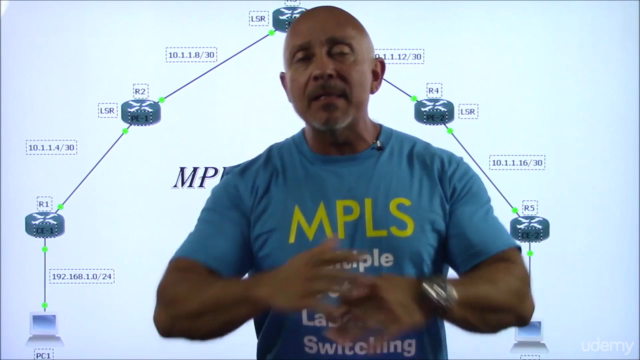Modern networks use Multiprotocol Label Switching (MPLS) as a key technology to enhance performance, scalability, and security. Network professionals, especially those aiming to get the Cisco Certified Network Professional (CCNP) certification, must have a solid understanding of MPLS basics. We shall examine the principles of MPLS and its practical applications in Cisco CCNP networks in this post.
What is MPLS?
MPLS is a protocol used to transport packets across a network. It operates at layer 2.5, between the network layer (Layer 3) and the data link layer (Layer 2). MPLS assigns labels to packets, which enables faster and more efficient forwarding of packets through the network.
MPLS can be used for various applications, including:
- Traffic engineering: MPLS enables network engineers to control the flow of traffic through the network by assigning different labels to different types of traffic.
- Virtual Private Networks (VPNs): MPLS can be used to create VPNs by assigning labels to packets from different customers.
- Quality of Service (QoS): MPLS enables network engineers to prioritize different types of traffic by assigning different labels.
MPLS Labels
MPLS labels are used to identify packets and determine their forwarding path through the network. The label is a 32-bit identifier that is assigned to each packet by the ingress router. The label is then used by the intermediate routers to forward the packet to the correct egress router.
MPLS labels have three parts:
- Label value: The actual 20-bit label used to establish a packet’s identity.
- Three experimental bits are employed for traffic engineering and quality of service.
- Stack’s bottom-most (BoS) bit: If the label is the final one in the stack is indicated by a single bit.
MPLS LSPs
MPLS LSPs (Label Switched Paths) are the paths that packets follow through the network. LSPs are created by assigning labels to packets and forwarding them through the network based on the labels. The path that the packet follows is determined by the labels assigned to the packet.
MPLS LSPs can be established in two ways:
- Signaled LSPs: These LSPs are set up using a signaling protocol such as RSVP-TE (Resource Reservation Protocol with Traffic Engineering).
- Static LSPs: These LSPs are configured manually by the network administrator.
MPLS VPNs
MPLS VPNs are used to provide secure connectivity between different locations. MPLS VPNs use MPLS labels to forward packets between the different locations. Each location is assigned a unique VPN ID, which is used to identify the location and the VPN learn MPLS tech in Cisco Certification.
MPLS VPNs can be of two types:
- Layer 3 MPLS VPNs: These VPNs use the network layer (Layer 3) to forward packets between different locations.
- Layer 2 MPLS VPNs: These VPNs use the data link layer (Layer 2) to forward packets between different locations.
Real-World Applications of MPLS
MPLS is used extensively in modern networks for various applications, including:
- Service provider networks: Service providers use MPLS to provide connectivity to their customers, including VPN services.
- Enterprise networks: Enterprises use MPLS to provide secure connectivity between different locations and to prioritize traffic based on QoS requirements.
- Data center networks: Data centers use MPLS to provide connectivity between different parts of the network and to optimize traffic flow.
Cisco CCNP Certification and MPLS
Understanding MPLS fundamentals is crucial for network professionals pursuing Cisco CCNP certification. MPLS is a significant part of the CCNP curriculum and is included in several exams, including the CCNP Route exam (300-101). Click here to get CCNP 350-401 materials.
- How to Prepare for a Cyber Security Job Interview - June 15, 2023
- Unblocked Games: Unlocking Fun and Learning Without Restrictions - June 14, 2023
- The 10 Principles of Insider Risk Management - June 14, 2023

